Die Seminare von Orehab Minds: Viel Wissen kompakt vermittelt
In unseren aufeinander abgestimmten Seminarangeboten erfahren Sie, wie Sie Ergebnisse und Fakten des Kaufunktionstests und der Digital Reports BRUX, CHEW, CEPH und CONDY in der Oralen Rehabilitation berücksichtigen und in Behandlungsprozessen einfließen lassen können. Die Erfüllung der personalisierten Medizin und die geforderte Patientenorientierung fordert ein geändertes, modernes Vorgehen. Denn Problemlösungsfähigkeit auf Basis individueller Befunde gewinnt überall an Bedeutung, wo individuelle Probleme behandelt werden.
Wir teilen unser Wissen mit Ihnen und Sie gewinnen praxisnahe Erkenntnisse
Die Seminare von Orehab Minds bieten Ihnen eine Vielfalt von fachlichen und wissenschaftlichen Angeboten, die Ihnen helfen die Digital Reports BRUX, CHEW, CEPH und CONDY noch effektiver in der Praxis einzusetzen. Getreu unserem Motto liegt auch hier der Fokus auf Zeitersparnis, Flexibilität und geringe Kosten bei gleichzeitig hohem Transfer von Wissen.
Nachfolgend finden Sie einen Überblick über alle anstehenden Seminare, Webinare und Curricula, sowie im zweiten Abschnitt eine sortierte Terminübersicht.
Wir freuen uns auf Sie!
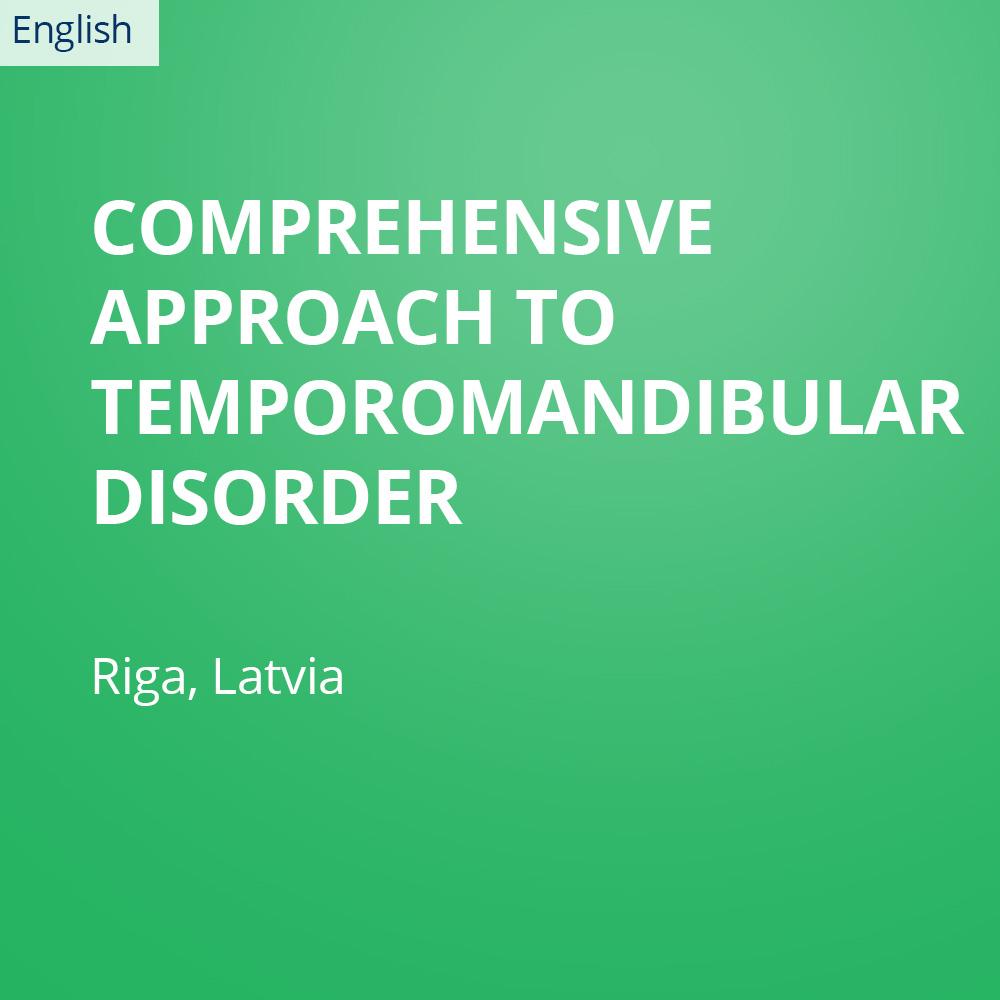
Dentist are getting hands-on insights into:
Module 1
Initial Diagnostics: Understanding the root causes of TMD for effective treatment planning.
Clincal functional analysis
Cast´s, Mounting & Articulator programming
Condylography (perform & interpretation)
Ceph analysis
evaluation of the diagnostic findings including treatment planning.
Splint indications
Module 2
Initial Splint Therapy: Techniques to stabilize and alleviate symptoms at the start of treatment.
The Theory of Intra oral Splints
Main Splint Indications; Typical Splint Designs
The actual scientific evidence – Review of the literature
Upper and/or Lower Splints; High Angle/High Vertical Cases
Case Presentations and Discussion, including Fabrication of Intraoral Splints
Protrusive Position, Retrusive Control, Anterior Control
Implementation and Equilibration: Clinical Protocol Night time or daytime?
24hours?, 24hours plus meals?, Monitoring, Adaptation and Equilibration
Implementation and Equilibration: Clinical Protocol
Special Splint designs
Patients with Headache and Neck Problem
Bruxing Patient with Vertical Loss
Patients with TMJ Pain and atypical facial Pain
Patients with Disc Dislocation with/without Reduction
What comes after the splints? The next treatment steps
Walking Back Strategies Sagittal Walking Back
Vertical Walking Back
Analog vs. Digital Manufacturing
Module 3
Final Splint Position, special splint indication, therapeutic position.
Case presentation with final Splint position
Finalising Therapeutic Position
Orthodontic treatment needs?
Walking Back Strategies Sagittal Walking Back
Vertical Walking Back
Module 4
Final Restoration after wax up.
Case presentation with final Wax up in Temporise
Orthodontics treatment stage
Wax up transfer into patients mouth
Dentist are getting hands-on insights into:
Module 1
Initial Diagnostics: Understanding the root causes of TMD for effective treatment planning.
Clincal functional analysis
Cast´s, Mounting & Articulator programming
Condylography (perform & interpretation)
Ceph analysis
evaluation of the diagnostic findings including treatment planning.
Splint indications
Module 2
Principal of the Slavicek Wax up Class 1 & 2.
Occlusion - functional principles, sequential occlusion concept
Occlusion - buccal aspects
Occlusion - lingual aspects
Functions of the front teeth, premolars, molars
Occlusion and occlusal functions: chewing, speaking, bruxing, posture
Articulator and articulator programming
Planning the growth: vertical dimension, inclination of the occlusal plane
Occlusal plane and active centric - growth exercise
Growing up Class I - Demonstration and hands-on practice
Growing up in class II / 1 - demonstration and practical exercises
Anterior guides F1, F2, F3
Retrusive control
Module 3
Final therapeutic Position, final Wax up of the own case from the doctor
Final therapeutic Position (after Splint)
Checking wich Angel classification
Wax up of own case from the dentist (practical part)
Analog vs Digital
Module 4
Final Restoration after wax up
Case presentation with final Wax up in Temporise
Orthodontics treatment stage
Wax up transfer into patients mouth
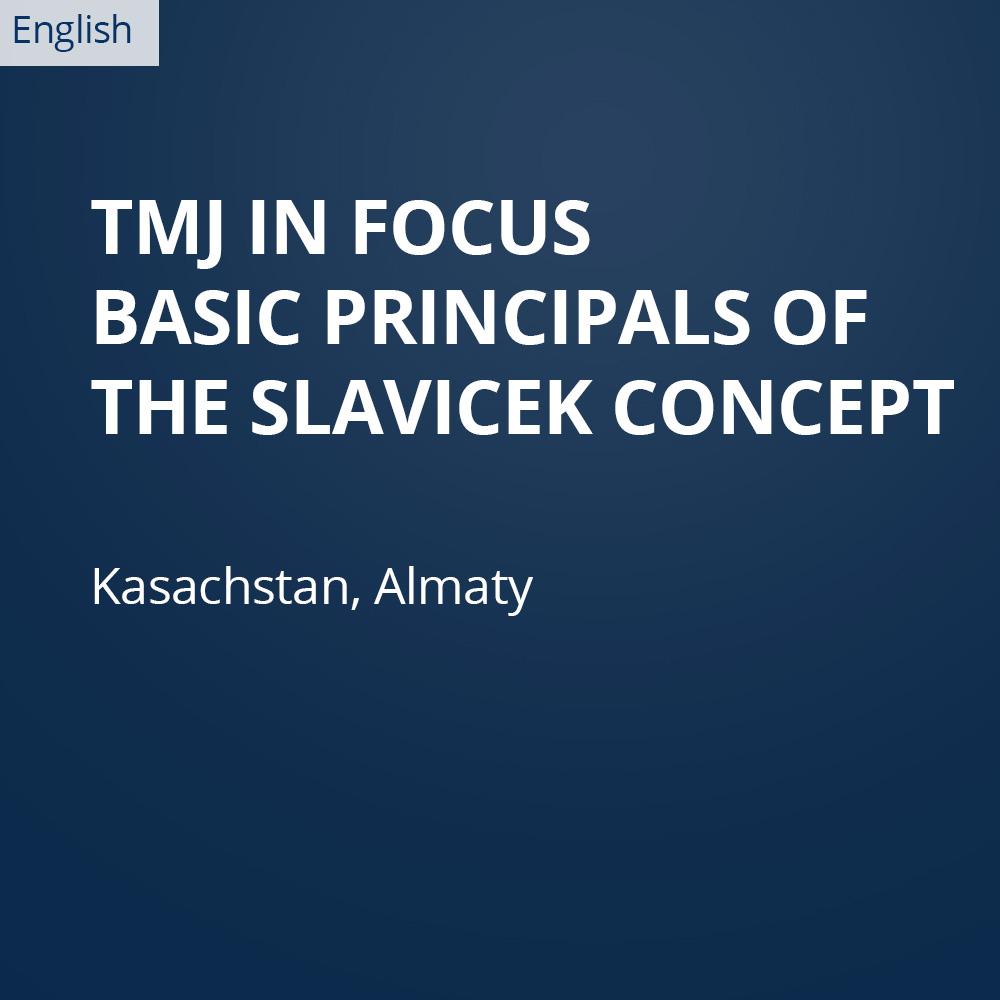
Join our Basic Course on the Slavicek Concept and discover transformative strategies to enhance your personal and professional life. This comprehensive program will introduce you to key principles and methodologies designed to foster growth, creativity, and success.
What You Will Learn:
Core concepts of the Slavicek methodology
Principels of treatment planning
Principels of of Gnathological instruments
Short introduction into Condylography
Techniques to boost productivity and creativity
Strategies for effective problem-solving in TMJ pain Patients
Don’t miss this opportunity to elevate your skills and mindset! Sign up today and take the first step towards a brighter future.
Prof. Dr. Gregor Slavicek will guid and introduce you into the strategie and the brain behind the so called „Slavicek concpet 4.0“.
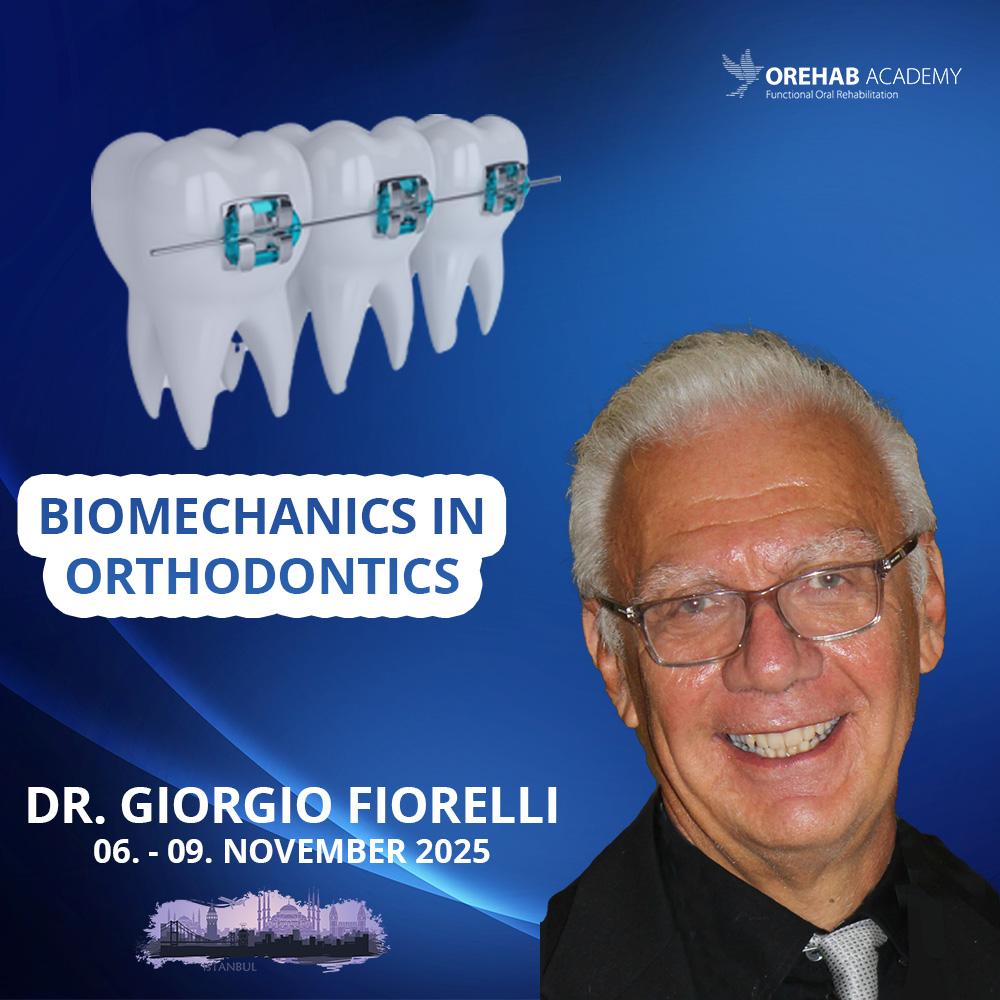
Join Us for an Intensive Dental Mechanics Workshop!
Unlock the fundamentals of dental mechanics with our eight-day workshop designed for dental professionals, students, and enthusiasts. Each day focuses on key topics essential for mastering dental movements and mechanics.
Module 1:
Day 1: Forces and Moments
Dive into vector calculations of the center of resistance.
Engage in hands-on exercises to reinforce your understanding.
Day 2: Dental Movements
Explore the concept of the center of rotation and learn about equivalent force systems.
Participate in exercises aimed at determining necessary force systems.
Day 3: Force Systems
Analyze active and passive units including frictional and non-frictional forces.
Gain insight into statical determination, consistency, equilibrium, and anchorage needs estimation.
Day 4: Biology of Dental Movement
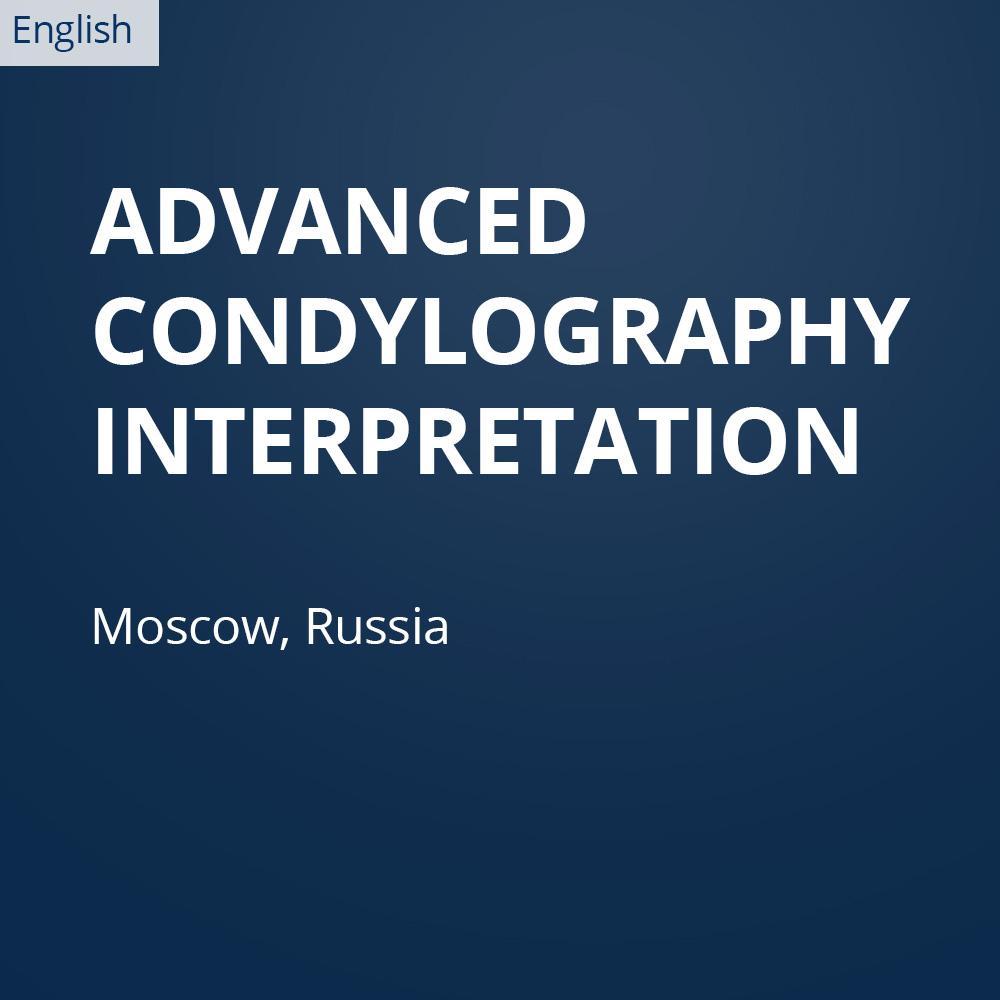
This new 4-day training for users of CADIAX Systems teaches how to use the multiple features offered by the software. It aims to build a fundamental understanding of the general principles of hinge axis recording.
The participants learn to gain and use insights from the different graphical presentations. In this training seminar, the participants learn how to combine their existing knowledge with the new-experienced tools and methods to use them more efficiently. In addition, they will know how to make the best diagnostics decisions on the dynamics of the TMJ and the stomatognathic system. Plus, how to make the multiple information comprehensible for the entire team and patients.
The workshops aim to lead participants in using all the provided data and graphs at the expert level.
By attending this seminar, you will gain unique understandings and enhance your knowledge about advanced digital condylography. Use the possibility of state-of-the-art data analyses that is not accessible to everyone. Identify areas they need to focus on in TMJ dysfunctions and pathologies. Integrate the available technology in your daily work.
The Coordinate System – CADIAX and the Articulator
The Recording Protocol – Initial Diagnostics, Follow Ups, Programming the Articulator
Free versus Guided Movements
Manipulated Movements
Recording of Functional Movements: Speech, Bruxing, Chewing
Recording Positions – eCPM vs. CPM
Reference Position and Re-Fix
Recording with the Splint
Interpretation of Axis Movements
Interpretation of Time Curves
Interpretation of Translation-Rotation Curves
Interpretation of Tooth Kinetics
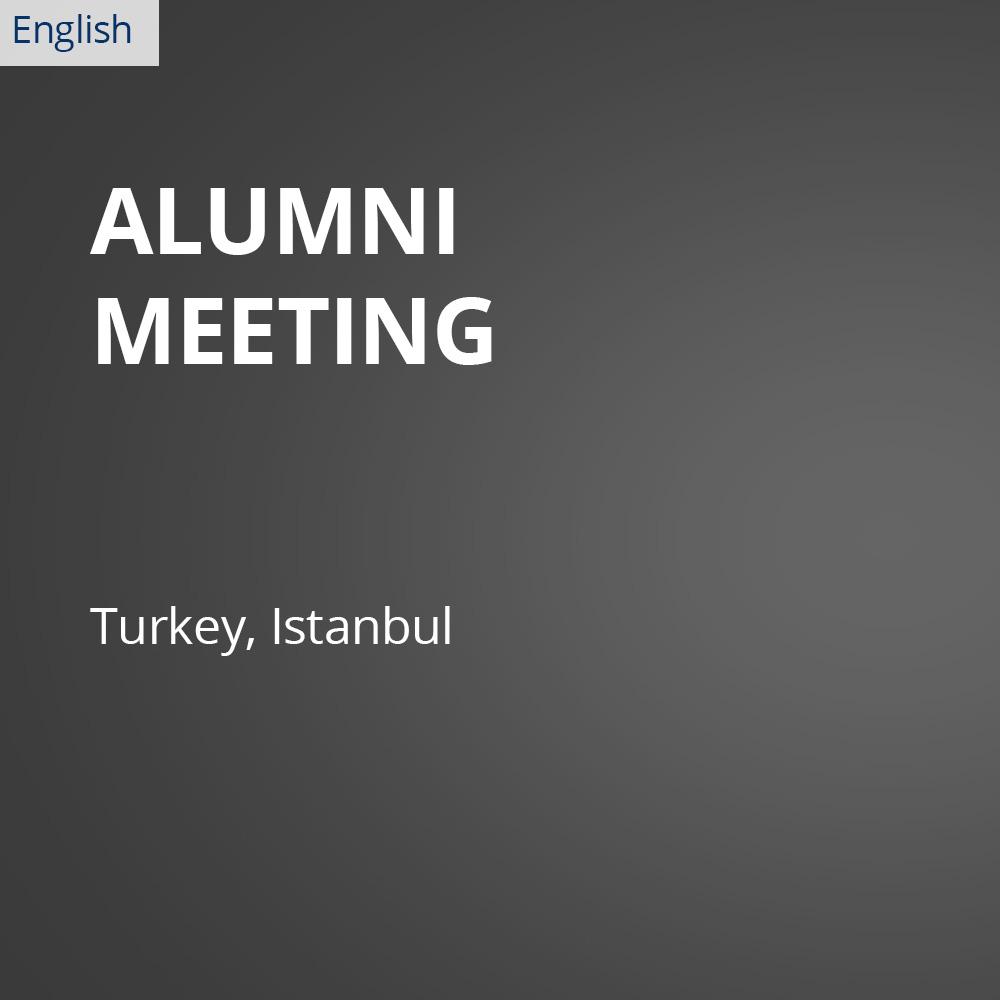
We (Orehab Minds) are organizing an Alumni Meeting 2024 to share new developments, thoughts and case presentation with you. This 2-Days event will take place in Istanbul on 30th June and 1th July 2024 – we are sure that Istanbul is easy to reach from your departure airport.
The main topic for this Alumni Meeting of Orehab Minds Academy:
Digital Technology in Oral Rehabilitation of complex Cases - an Assessment of the Current Situation
The aims of this meeting are to support decision-making in daily practice for or against an investment in digital technologies
how far digital technology has come in supporting the clinical application of gnathological procedures in a meaningful way.
does the use of digital technologies improves the output? and if so, in what respect and to what extent?
are digital technologies able to support, improve or enhance the basic gnathological approaches?
Beside Case Discussions and Case Presentations, we will highlight the following questions:
Workflows in oral rehabilitation: analog versus digital versus combined
Digital supported diagnostic procedures:
Analog versus digital impressions, is the accuracy of these methods the same?
Analog versus digital mounting procedures: the face bow, the bite registration, is there a need for a Reference Plane?
Analog versus digital articulators – how to handle correctly?
Instrumental functional analysis – Old School versus New Techniques: is the outcome the same?
Mandibular movement recording – hinge axis recording, pantographic tracings, opto-electronic versions: are they producing the same data?
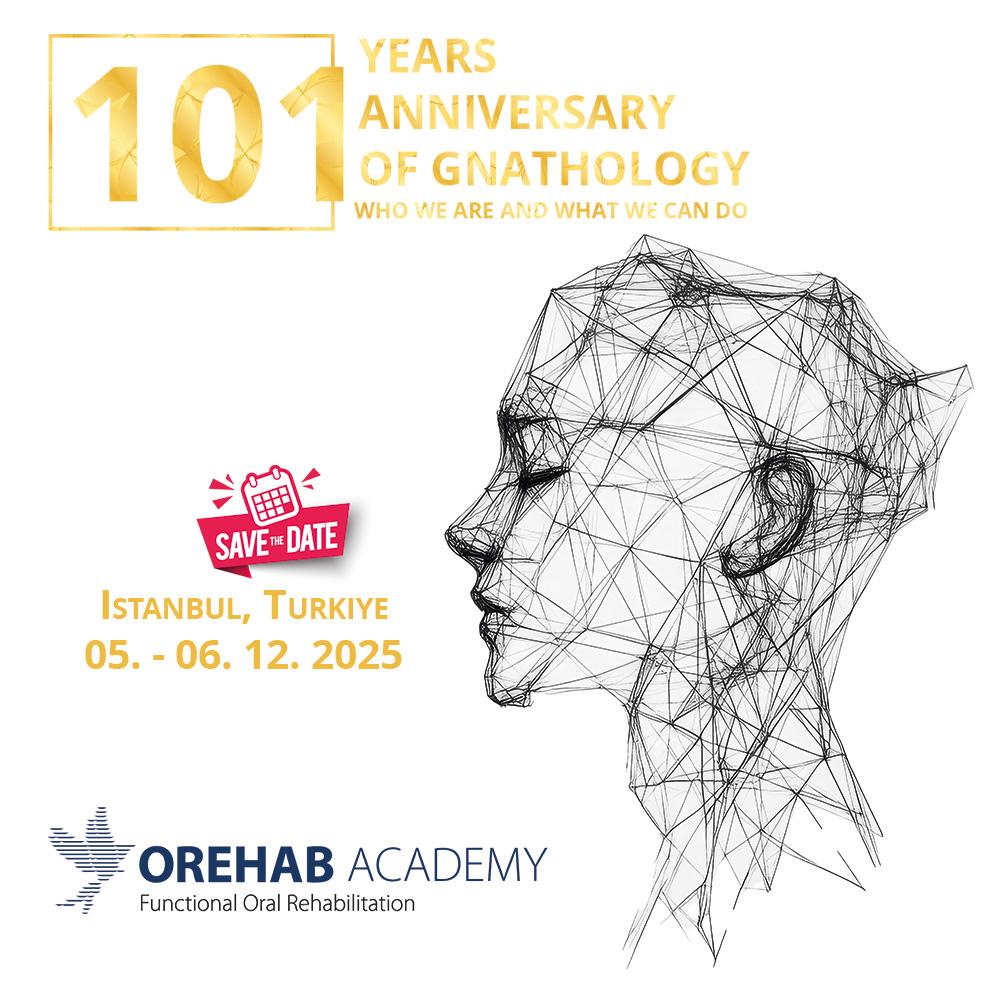
Step into the world of dentistry's greatest milestone! Join us as we celebrate the momentous 100 Years Anniversary of Gnathologie.
From groundbreaking advancements in the study of jaw movement to revolutionizing dental treatments, this remarkable event promises to take you on an unforgettable journey through a century of remarkable breakthroughs. Prepare to be captivated by the fascinating history, awe-inspiring innovations, and the monumental impact of Gnathologie on modern dentistry. Don't miss this exclusive opportunity to honor the past, embrace the present, and envision the future of gnathological excellence. Get ready to witness dentistry like never before!
05. 12. 2025 Program day 1:
1000 - 1130 M.Sc. Anastasia Slavicek
The Evidence: Occlusion and General health; Occlusion and Mental Health; Occlusion and Cognitive Decline/Dementia; Occlusion and orofacial Pain Disorders.
1130 - 1300 Prof. Dr. Gregor Slavicek & Dr. Ksenia Nafigina
Development of occlusion: Occlusion is constantly changing throughout live; the newborn, first teeth eruptions, deciduous dentition, early mixed dentition, late mixed dentition (regular and atypical development), final occlusion of the young adults, the adults, the aged, the elderly, the old; partial tooth loss, the edentulous mouth.
1330 - 1530 M.Sc. Massimiliano Veronese
The knowledge, skills and abilities of the dental technician enable dentists to offer patients high-quality and functional dental prosthetics, thereby contributing to the quality of life and maintaining the functions of the chewing organ.
1600 - 1730 Dr. Korkmaz Sayinsu & M.Sc. Anastasia Slavicek
Face Concept and Slavicek Concept: The fundamental items and characteristics of the face concept & the Slavicek concept: The characteristics - the main ideas - the background - the goals.
1800 - 1930 Dr. Igor Lebedev
Proprioception of the stomatognathic System:
06.12.25 Program day 2
0900 - 1100 Dr. Jelena Mezdreija & Edmund Mezdreija
Digital Oral Rehabilitation Work Flow: Digital dental technologies are fascinating and tempting technologies that promise a lot - both technically, economically and organizationally. Can these technologies also keep the promise in terms of complex occlusal rehabilitation? Are the digital offerings already so advanced that a push of a button is enough to create the desired occlusal parameters?
1130 - 1300 B.Sc. Florian Slavicek & Dr. Cansu Alpaslan
Review of the Literature CMD/TMD: Study designs, study results, study conclusions; the evidence and what do we know & what don’t we know.
1330 - 1500 Dr. Grigory Popov & Dr. Anna ljuštšenko
Interdisciplinary Team work in daily Gnathological dental clinics: Interdisciplinary teamwork in everyday gnathological dental practices: Pre-prosthetic orthodontics to reduce the invasiveness of the prosthodontic occlusal rehabilitation.
1530 - 1700 Dr. Sergey Grishin
Occlusal changes in a largely caries-free dentition: The more or less caries-free dentition represents a major challenge for the entire team. Adolescents and young adults make up a large proportion of the patients, who are naturally interested in protecting their own teeth and an optimistic long-term prognosis.
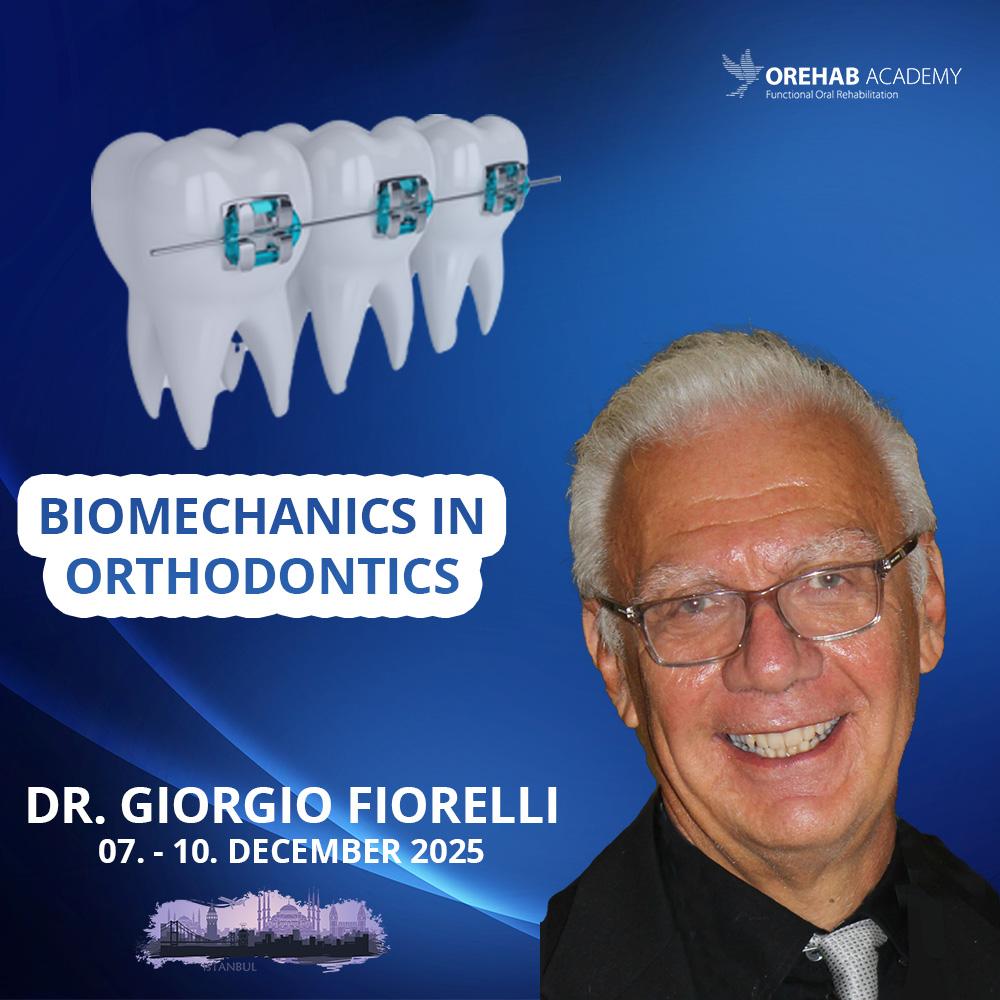
Module 2:
Day 5: Anchorage Foundations
Continue your exploration of anchorage with a focus on skeletal anchorage (Part 2).
Learn about the application of cantilevers (Session 1).
Day 6: Statically Determinate Mechanics
Investigate the use of cantilevers in statically determinate mechanics (Session 2).
Day 7: Statically Indeterminate Mechanics
Master essential concepts in continuous arch mechanics and alignment with an emphasis on statically indeterminate systems.
Day 8: Arch Techniques
Compare the segmented arch approach with the straight wire technique.
Understand the fundamental concepts surrounding palatal and lingual arches.
Don’t miss this opportunity to enhance your skills and knowledge in dental mechanics!

